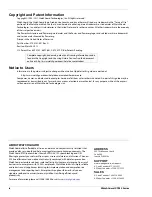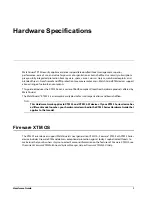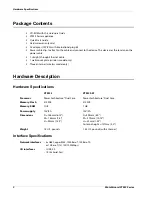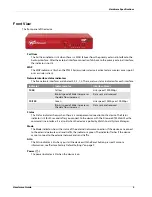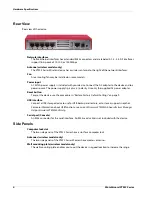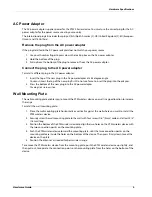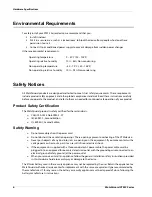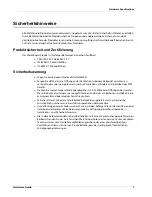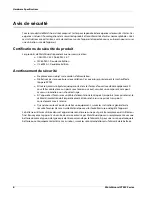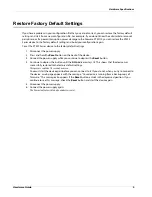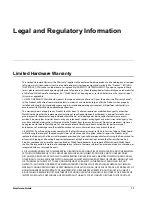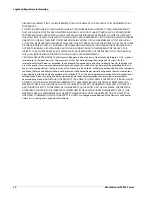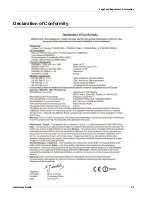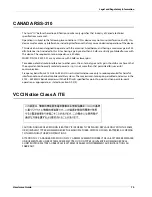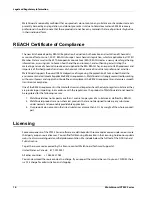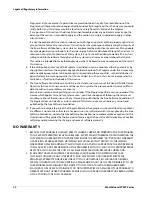
10
WatchGuard XTM 3 Series
Hardware Specifications
About the XTM 3 Series Wireless
The wireless device automatically detects the wireless region where the device is located; the user cannot
change the wireless country setting.
The WatchGuard XTM 3 Series Wireless conforms to IEEE 802.11a/b/g/n wireless LAN standards. Some key
features that have an effect on performance of an 802.11a/b/g/n wireless device include antenna directional
gain, signal attenuation (path loss), and channel data rate.
Antenna Directional Gain
Antenna directional gain is based on the shape of the radiation pattern around the antenna. The XTM 3 Series
Wireless uses three 2.0 dBi swivel-mount whip antennas. The whip antenna has a radiation pattern similar to
a sphere that is depressed in the center. If the antenna is vertical, the gain is greater in the horizontal direction
and less in the vertical direction.
Signal Attenuation
The strength of the wireless signal can vary based on the distance between the XTM 3 Series device and the
wireless client, the orientation of the antennas, and many environmental factors such as physical obstructions
(cabinets, walls, doors, windows, cars driving by, and people moving around), other wireless devices (access
points and clients on overlapping channels, wireless phones, or nearby Bluetooth transmitters), and some
appliances such as microwave ovens, and mercury street lamps at night, to name a few.
Multi-path reflection occurs when RF signals to the receiver arrive via more than one path because of
reflections off walls and other surfaces between the transmitter and the receiver. Multi-path reflection can
cause signal strength to vary by as much as 30dB. To reduce variation in signal strength due to multi-path
reflection, the XTM 3 Series Wireless uses three antennas spaced some distance apart. This ensures that signal
conditions are different at each antenna, and lowers the chance of losing data due to poor reception at any
one antenna. All three antenna signals are combined, to increase the overall signal to noise ratio (SNR), and
therefore the increase data-rate at a given range.
Wireless clients often have one or two antennas that are spaced close together because of smaller enclosures.
As a result, the signal conditions at each antenna are more similar, and if there is a signal loss, both antennas
are negatively affected. The XTM 3 Series Wireless with three widely spaced antennas will tend to have better
range on average than a wireless client, and may be able to receive signals from a wireless client even if the
client cannot receive signals from the XTM 3 Series Wireless.
Channel Data Rate
Channel data rates change with the modulation type, which changes based on conditions. This includes noise
and the distance between transmitter and receiver. In general, the available data rates for an IEEE 802.11a/b/
g/n device range from 1 Mbps in the worst conditions to over 200 Mbps in the best conditions.


